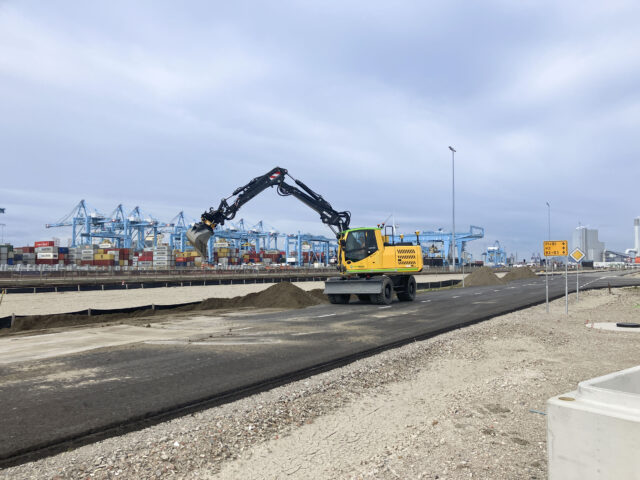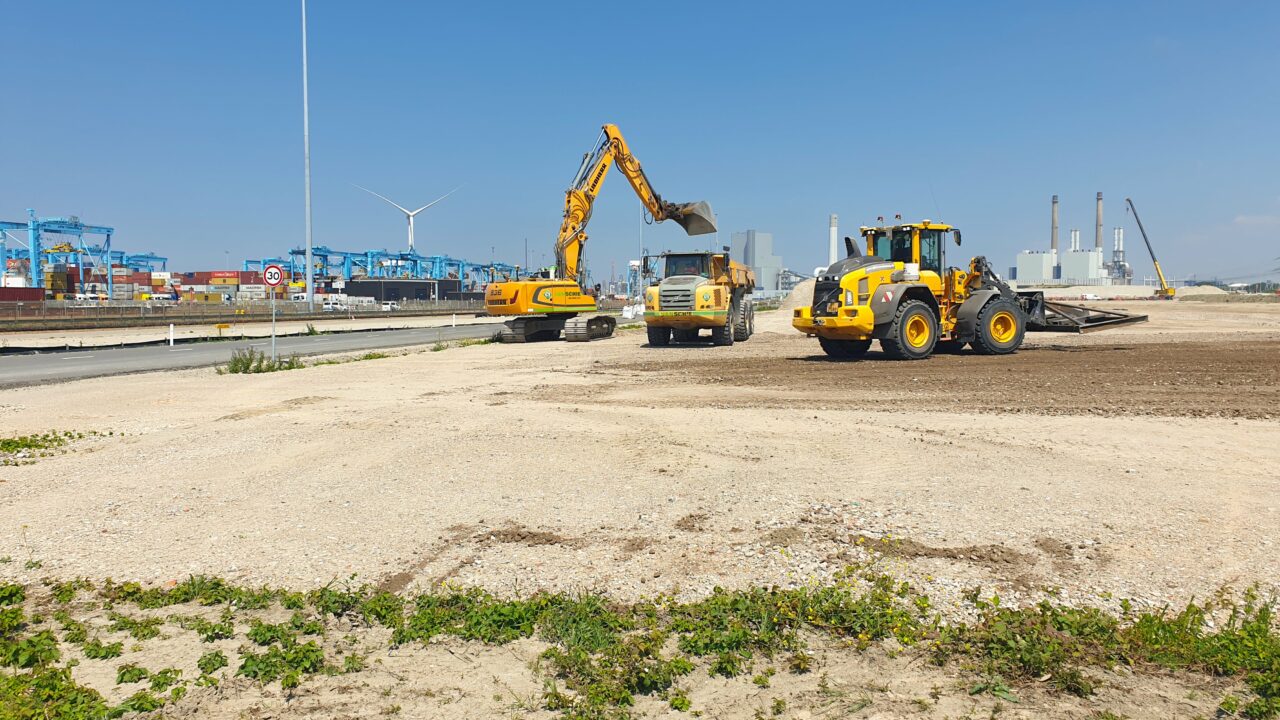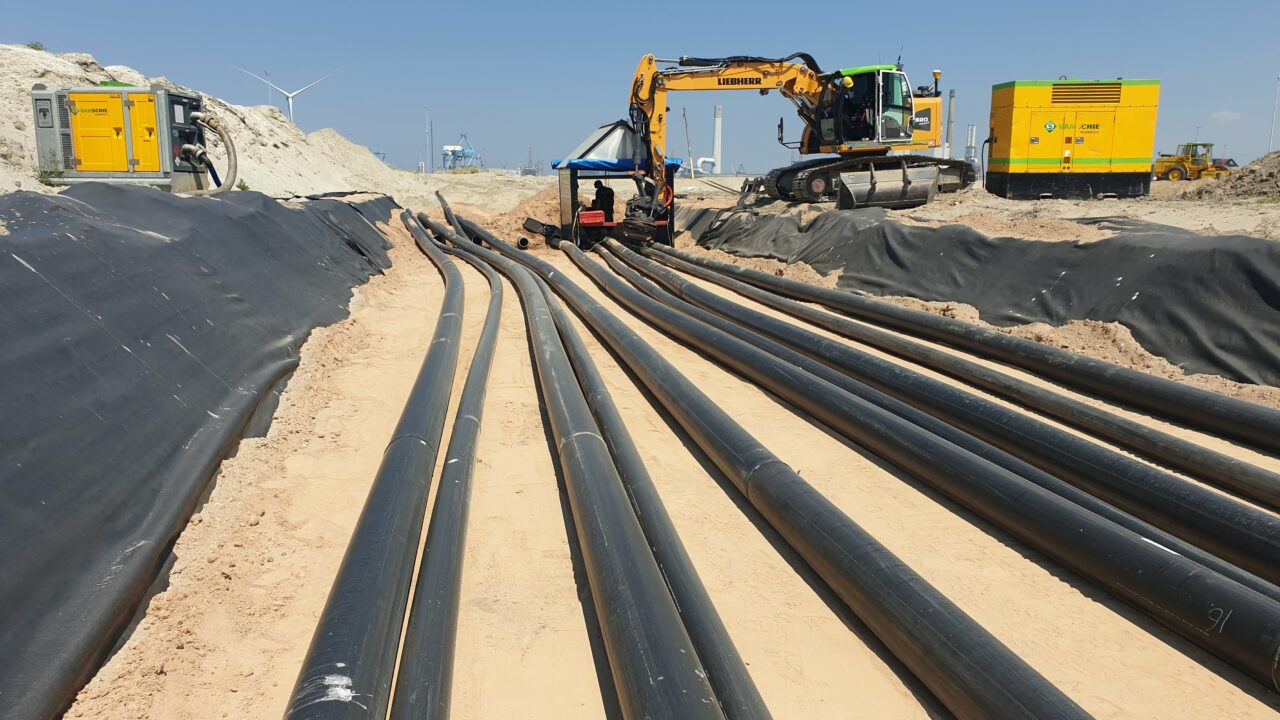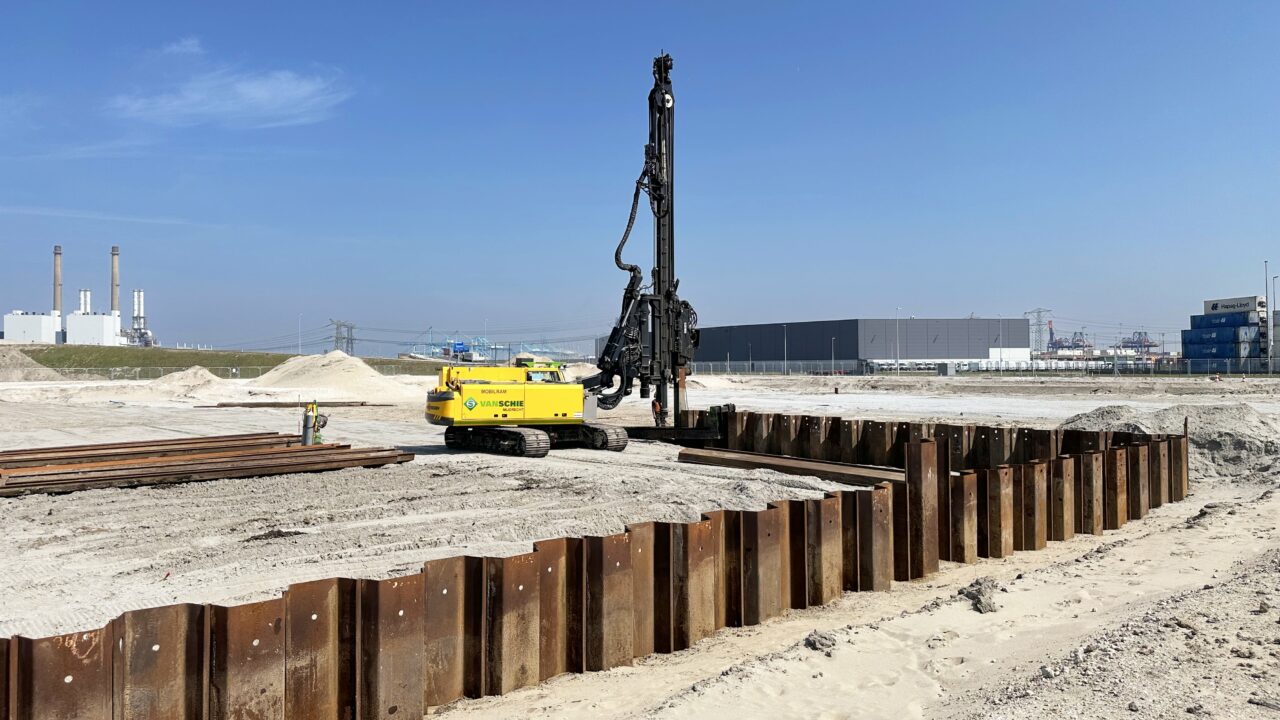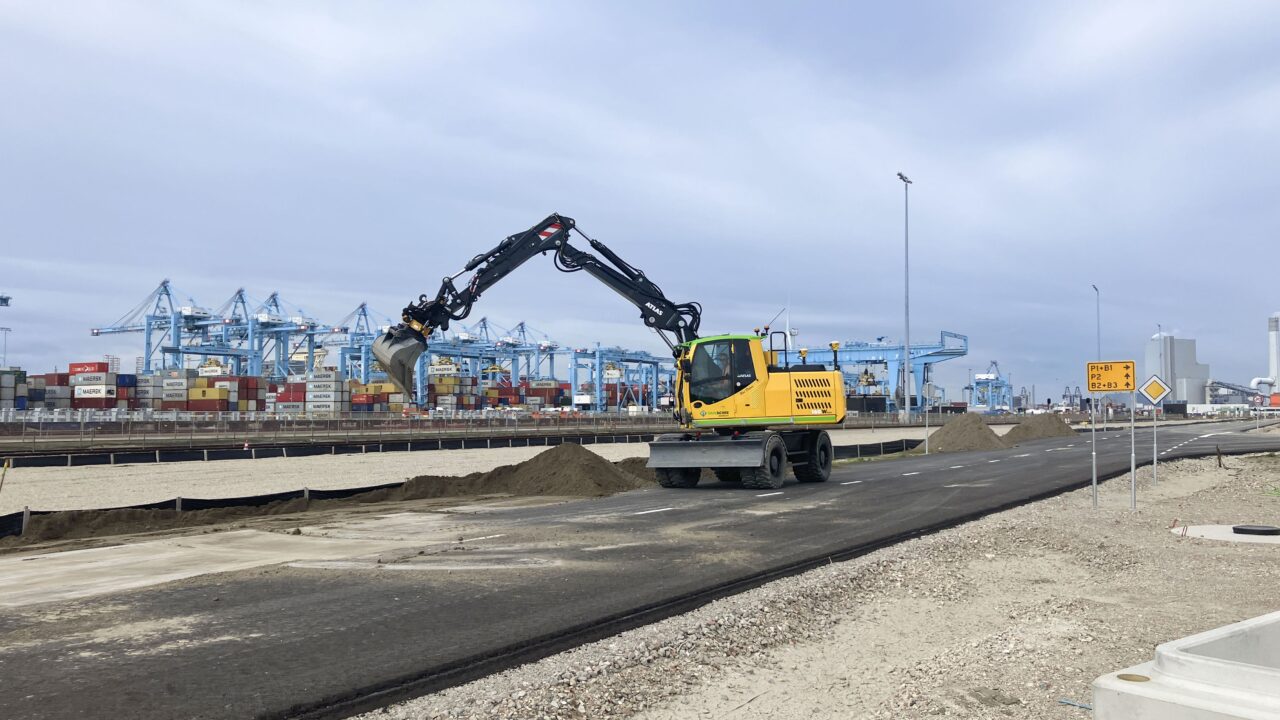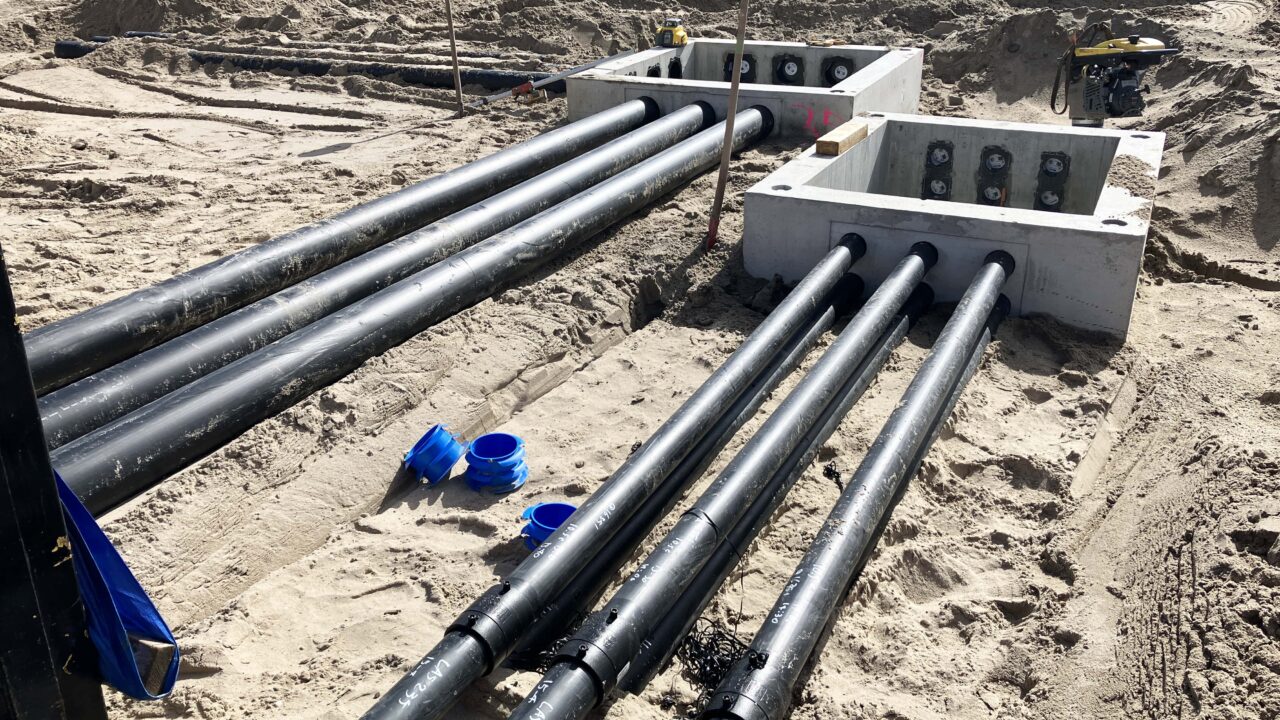To meet climate goals, additional wind farms are being built offshore, far from the coast. The connections, the cables, are coming ashore at the Maasvlakte. These are cables carrying 525 kV direct current, which will be converted to 380 kV alternating current at the converter station. Via an underground connection, they will be laid to the new Amaliahaven high-voltage substation. There they will be connected to the national grid. In preparing the enormous site for construction and laying the infrastructure, Van Schie played a major role – commissioned by Spie Nederland B.V. for Tennet. A work of great complexity and tight planning. Starting with the construction of asphalt roads, driving plate tracks and storage areas. A total of about nine hectares, of which two hectares were asphalt. Then followed the enormous job of laying 27 kilometers of casing pipe and 2,700 meters of sewer. For this, no less than 180,000 m3 of soil was moved, compacted and partially improved. At the location where the new high-voltage substation is being built, not only soil improvement was carried out, but sheet pile walls were also installed to create two large construction pits 4.5 meters deep. A 275-meter-long retaining wall was also built to bridge the difference in height with the adjacent terrain. Last but not least, the approach to the entire project took extensive account of the presence of protected species. But the biggest challenge with this complex work was the tight schedule, which had to ensure that the construction of the station and associated installations could be started on time. This deadline was also met.
Backfill Sand
The main task for Van Schie actually consisted of performing the complete earthwork: digging, backfilling and compacting with backfill sand, plus supplying and installing the casing pipes (including welding). And that over a total length of no less than 27 kilometers! The thick pipes are for the power cables; the thinner pipes for the data cables. For the latter, 40 so-called
‘pull pits’ have been installed. The soil in which all the pipes lie is of a special composition. The casing pipes lie all around in so-called backfill sand, as a sealed package wrapped in separation cloth. This special type of sand can hold moisture well. It keeps the soil from drying out and the pipes from overheating. It is slightly red in color and comes from a special mine in Germany. The application of this sand improves the heat transfer of the cables and usually also allows a higher cable load.


